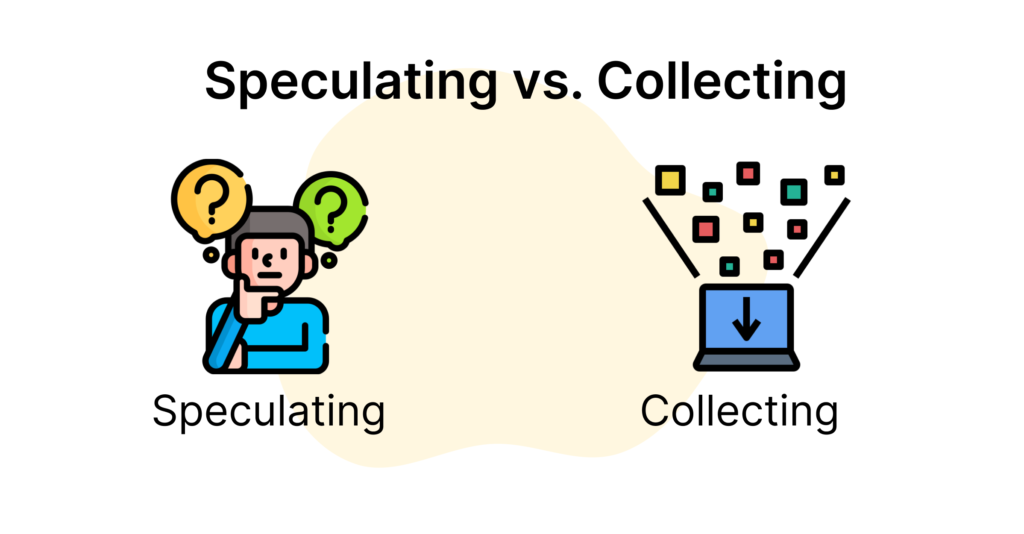Buying
NFT Collectors vs. Speculators

Non-fungible tokens (NFTs) have taken the cryptocurrency world by storm, with almost every major YouTube channel, Twitter feed, and cryptocurrency blog covering the space with significant interest over the last 6-12 months. The opportunities to get involved in NFTs are only growing over time as more and more platforms are launched, and even more NFTs are developed by creators around the globe. Naturally, with so many opportunities to support NFTs, a range of different NFT ‘investors’ have similarly sprung up. This post will cover the difference between two key types of NFT purchasers, namely speculators, and collectors. Let’s get started!
The concept of a collector is not foreign, nor was it created along with NFTs. Human beings have been collecting items since Palaeolithic man wandered across the plains of Africa, collecting rocks and other items they thought were interesting or valuable. Indeed, human beings have collected everything from coins to stamps to even large amounts of capital. As you might then imagine, the idea that a type of NFT investor who simply collects NFTs for their own personal fulfillment is not a particularly far-fetched idea.
Collectors of NFTs have very specific psychological frameworks that differ quite significantly from other types of investors. They usually care very little about the monetary value of their NFT. Instead, they collect NFTs they believe are worth owning for no other reason than the simple fact that they enjoy owning them. They are unlikely to sell in a short space of time and, more often than not, will be totally apathetic to the short-term price fluctuations of the NFT itself.
Speculators, on the other hand, are an entirely different breed of animal. One can think of a speculative NFT investor as being similar to the traders found in the traditional cryptocurrency and equities markets. These types of investors are the polar opposite of their collecting peers. They care very little for the NFT itself and derive very little (if any) joy from owning the asset itself. Their only goal is to generate a profit. In order to do this, speculators will attempt to locate NFTs they believe are undervalued and purchase them in the hopes that their value will increase. Once the value has increased, they will sell the NFT for a profit.
As a result of the psychological frameworks in which speculators operate, they are likely to own vast quantities of NFTs over time as they continually buy and sell NFTs in their quest for profits. In the equities markets, it is a generally accepted fact that most traders will lose money over time, as it is incomprehensibly difficult to successfully trade the markets over a sustained period of time, especially when trying to time its peaks and troughs. That said, due to the freshness of the NFT space and the current bull market that we are currently experiencing, it is difficult to say whether many speculators will be able to successfully flip NFTs over longer periods of time.
If you find yourself reading this post and have already begun purchasing NFTs, you might find that you see yourself as both a collector and a speculator to some extent. You may be wondering, is it possible to be both? The short answer is quite simple, yes. You can, of course, be both a speculator and a collector, collecting the NFTs you personally want to own and speculating on those you simply believe will increase in value.
This amalgamation of investing styles may seem absurd to some at first, but it is actually quite typical. If we draw a comparison between NFTs and the traditional art investing world, we will find that many art investors operate in a very similar manner, collecting the art pieces they wish to own and display in their homes and speculating on other pieces they simply believe will increase in value over time.
Lastly, whether you are considering an investment into NFTs or have already begun your purchasing journey, we strongly recommend buyers exercise caution when purchasing these assets due to their volatile nature. It is strongly recommended that buyers do not allocate more capital than they are willing to lose.









